Journey through the museums of Sweden, the only European country that has never closed them for coronavirus
No mandatory confinement to counter the spread of the Covid-19 coronavirus epidemic. Sweden wrote a significant page in the history of the pandemic by remaining the only country in the European Union that did not impose the so-called lockdown: it certainly cannot be said that daily life did not undergo changes, but drastic measures were not applied in the kingdom as in the rest of the continent and in the vast majority of the world’s countries, and inhabitants were able to continue walking in parks, eating in restaurants, meeting in bars, working out in gyms and sports clubs, and visiting museums.
Of course, however, not everything went on as before and not everything is open, as one might believe without delving into what is happening in the Scandinavian country: Sweden has banned all public events with more than 50 participants (and as a result there has been a ban on concerts, theatrical performances, demonstrations and sit-ins, religious events, and large cultural or sporting events, starting with the Allsvenskan, Sweden’s premier league championship that was scheduled to begin on April 4 and has been postponed until a later date), bars and restaurants can only serve at tables, high schools and universities have left students at home and continued classes via distance learning, visiting elderly relatives in nursing homes is not possible, and a list of precautions, tips and recommendations has been issued for all residents to keep to.
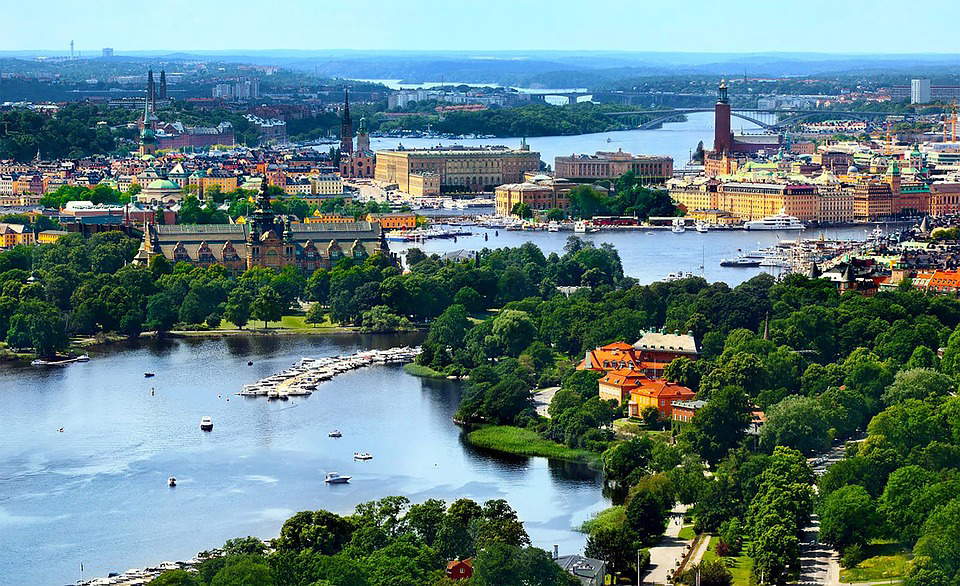 |
| View of Stockholm |
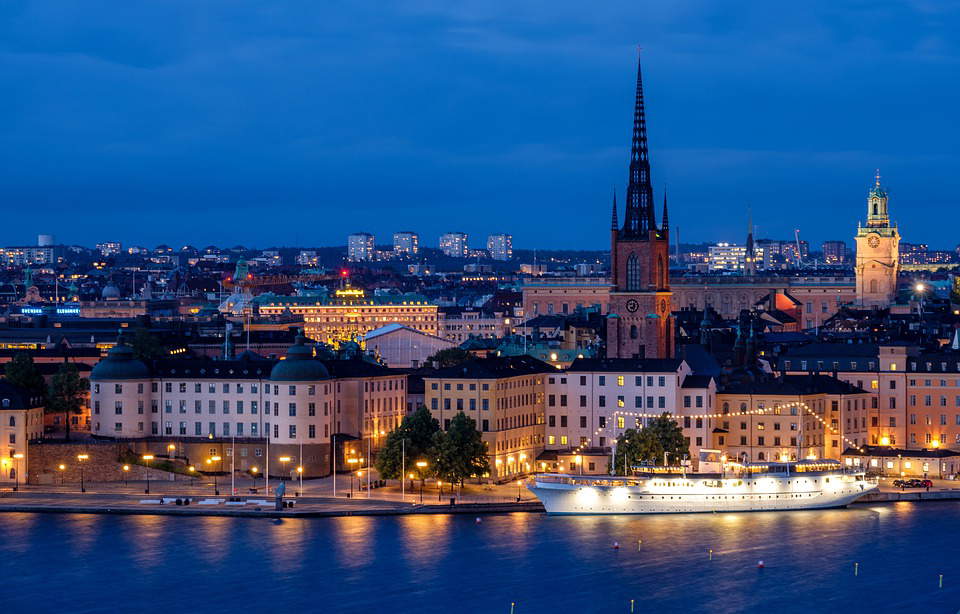 |
| View of Stockholm |
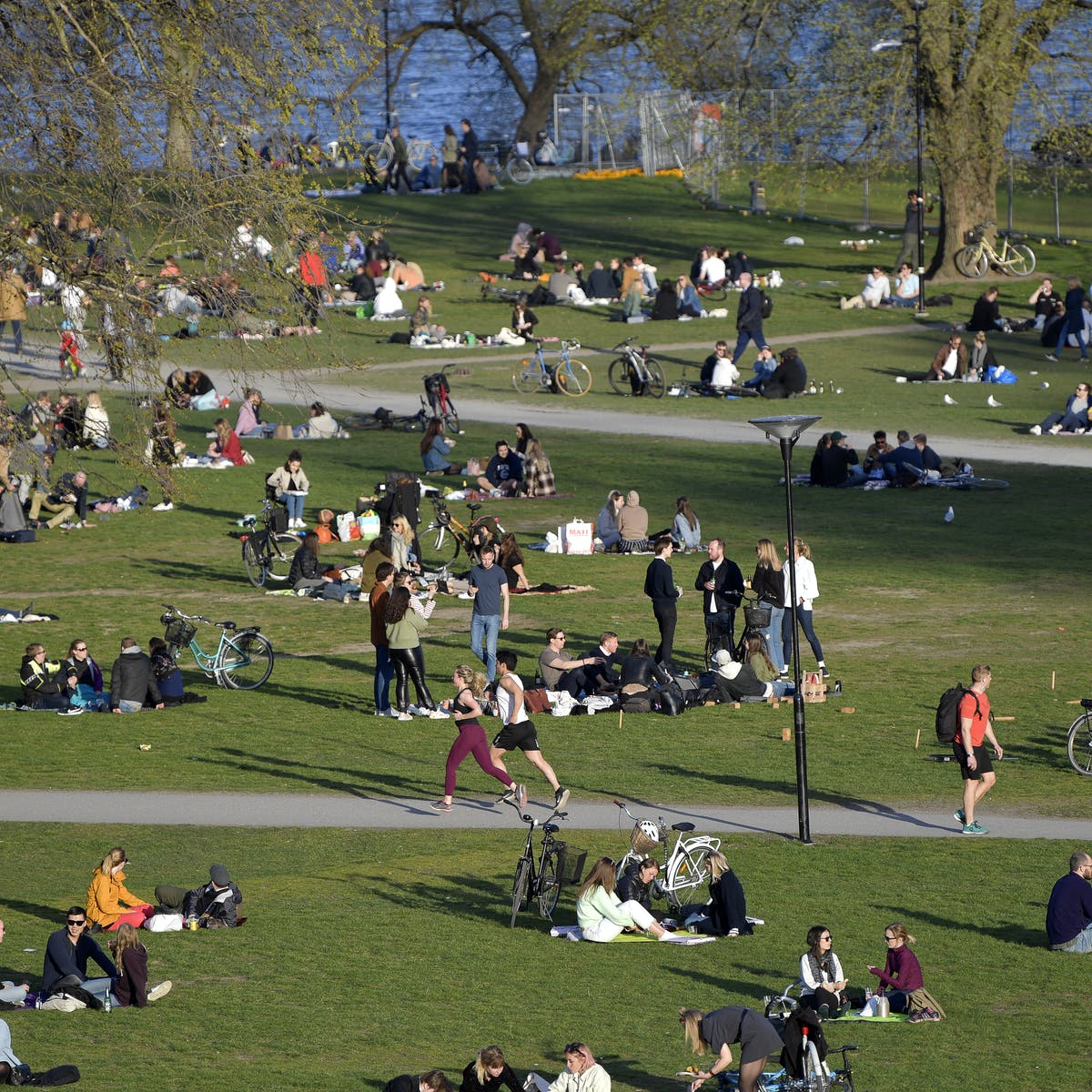 |
| People in a Stockholm park during the coronavirus. Ph. Anders Wiklund/EPA |
The approach, in short, is not one of no lockdown, but one of bearable containment measures: in Sweden, combating the epidemic relies more on collective responsibility than on government impositions. People are still encouraged to work from home, to behave prudently and respectfully toward others, to follow scrupulous personal hygiene, to avoid nonessential social contacts, and not to travel unless it is essential. The Swedish model has certainly not been without criticism, even in the country itself: at the end of April, twenty-two eminent scientists wrote an article in the newspaper Dagens Nyheter calling on the government for more restrictive measures, since the soft approach, in their view, had not been sufficient, especially because of the high mortality rates touched upon in Sweden, which were higher than in neighboring countries.
Based on data collected by Oxford University’s Our World in Data project, as of today, May 14, 2020, Sweden has a rate of 342.6 deaths per million population: the figure is significantly lower than that of more densely populated countries that also have imposed many more obligations and bans and stricter rules (514.47 for Italy, 414.78 for France, 579.71 for Spain, 488.85 for the United Kingdom, 763.01 for Belgium), but it is much higher than that of other neighboring countries such as Denmark (92.02), Finland (51.26) and Norway (42.24). Other evidence is needed, however, to understand why the number of deaths in Sweden is so high: the first is the distribution of cases. As of May 14, 35 percent of the infections (10,188 out of 28,582) occurred in Stockholm County, the most densely populated county in the country: the capital alone has a population density of about 5,000 inhabitants per square kilometer, higher, for example, than that of Rome, Florence, Genoa, Bologna, Bari and Palermo (all under or well under 4.000 inhabitants per square kilometer), and comparable to that of cities such as Milan (about 7,600), Turin (6,700), or to the density of many municipalities in the Milanese or Neapolitan hinterland (in short: if Stockholm were in Italy, it would be among the 30 most densely populated municipalities, and in Italy there are almost eight thousand municipalities). The rate of deaths per hundred thousand inhabitants in Stockholm is at least double or triple that of other counties in the country (with the only exception of Södermanland, a neighboring county, which has a lower but comparable rate): 74.83 to date versus, for example, 20.5 in Västra Götaland (capital Göteborg, the country’s second largest city) and 8.99 in Scania (capital Malmö, Sweden’s third largest city), i.e., the two most populated counties after Stockholm (for comparison with Italy, the rate is 150.51 for Lombardy, 79.42 for Piedmont, 87.56 for Emilia Romagna, 34.87 for Veneto, 25.84 for Tuscany). Taking Stockholm County out of the statistics, the figure of deaths per million population would drop to 219.94.
Still, also contributing to the high death toll is, as in Italy, the management of nursing homes: the FHM, the Public Health Agency of Sweden, has already launched investigations to find out why the virus has spread so far in residences for the elderly. Suffice it to say that, as of April 30, about half of the deaths recorded in Stockholm involved elderly people housed in nursing homes. This evidence, however, is not enough, according to many, to justify Sweden’s strategy, and Sweden would continue to “trade disease for less economic harm” and “play a very risky bet”(so journalists Peter Coy and Charles Daly in Bloomberg Businessweektoday ). However, epidemiologist Anders Tegnell, an infectious disease specialist and FHM’s Statsepidemiolog (thus responsible for developing the strategy), continues to defend the Swedish approach: speaking to broadcaster CNBC last week, Tegnell asserted that “we are doing something that no one has ever done before,” that “things are working,” that “we have clearly passed the peak in Stockholm and our health system has been able to handle it, we have extra beds in hospitals and everyone who needed treatment has been treated, even non-Covid patients who needed it,” and concluded by saying that the Swedish experience “has not caused major problems, we can keep our society open in a reasonable way without there being any heavy effects.” As for the comparison with neighboring countries, Tegnell merely stated that "there is to remember that there are many other countries in Europe that have had heavy lockdowns and much worse situations than ours," and he mentioned Belgium as a worst case, but without further comparison (just to mention one thing, Belgium has a population density that is not even close to Sweden’s: it is ten times higher). And then there is the dramatic case of the Somali immigrant community, about which little is said but which records mortality rates disproportionate to those of the rest of the Swedish population.
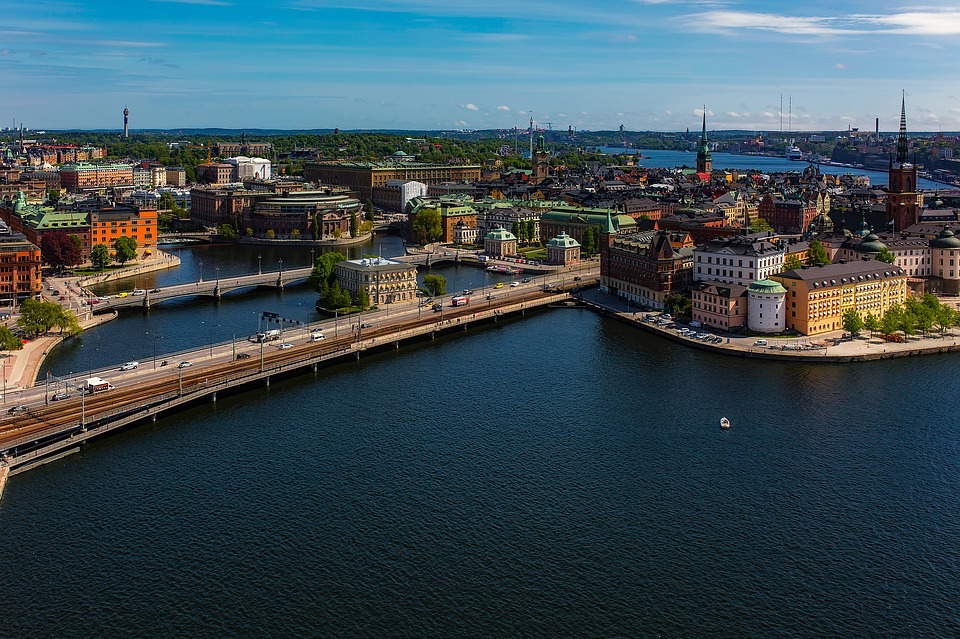 |
| View of Stockholm |
 |
| Anders Tegnell. Ph. Frankie Fouganthin |
It will probably take a long time before it becomes clear whether indeed the Swedish strategy will have paid off best, because in addition to the immediate effects, it will be necessary to assess the long-term effects, particularly the economic ones. In the meantime, however, it is possible to record what is happening in the country, and from the point of view of our masthead it is interesting to note that Sweden is the only European country that has never closed museums: everyone has been left free to decide what to do, and in the country the situation is very diverse. In Stockholm, Skansen, the “world’s oldest open-air museum,” as the official presentations state, is open; it is located on the island of Djurgården and is one of the most popular places for the capital’s inhabitants and tourists: after the Vasa Museum, it is the most visited institution in the country. Not all sections are open, however: Hazeliusporten, the large horseshoe-shaped early 20th-century building that serves as the entrance to the funicular railway (which is also closed indefinitely), and Lill-Skansen, the children’s zoo that houses small domestic and wild animals, play areas, and educational farms, remain off-limits to the public. Instead, Skansen-Akvariet (the aquarium), the Baltic Sea Science Center, and the park’s stores and boutiques are open.
Obviously, the Skansen management has ordered some measures: automatic machines have been installed at the ticket office for which cash cannot be used, the most cramped rooms have been closed, the frequency of cleaning operations has been increased, events have been canceled, staff have canceled their trips, and meetings are done by video conference, every day the management holds a meeting to monitor the developments of the contagion and act accordingly if necessary. No closure has been decided because Skansen enjoys a very large outdoor area, reasoning that interpersonal safety distance can be maintained. In addition, visiting the park and its indoor sections requires adherence to certain rules to prevent the spread of coronavirus infection: visitors are therefore urged to maintain a safe distance, to stay home if they are unwell, and to follow the elementary rules of personal hygiene, starting with frequent hand washing.
Not everyone, however, has been of the same opinion as Skansen, and there are also those in Stockholm who have closed their doors, as in the rest of Europe. This is the case with Stockholm’s state museums, first and foremost the Nationalmuseum, the National Museum of Fine Arts, one of the oldest in Europe (it was founded in 1792 and took its current name in 1866), which is very active on international acquisitions, even high-profile ones, and where works of the highest caliber are kept: there is the best of the Swedish schools from every period, there is a rich collection of Italian and European seventeenth-century (with works by Rembrandt, José de Ribera, Matthias Stomer, Jacob Jordaens, Antiveduto Gramatica, Domenico Fetti, and as of a few weeks ago a valuable painting by Artemisia Gentileschi was added), there are works by Perugino, Giovanni Bellini, Bronzino, and Federico Barocci. Upon entering the site, which is available in six languages (English, Swedish, and the idioms of the country’s most numerous linguistic minorities: Finnish, the language of the northern Sami, Romani, Yiddish, and Meänkieli, or a dialect of Lapland), one reads a laconic notice informing that the museum is closed until June 16 due to coronavirus (the reopening date was announced yesterday).
“The closure,” Hanna Tottmar, chief press officer of the Nationalmuseum, explained to us, “was not forced or imposed by the government: it was a joint decision of the state museums in Stockholm, and it was taken as a measure to help reduce the spread of Covid-19, since the capital area is the most affected in Sweden. The state museums are currently working to understand how it will be possible to reopen in the summer.” Doors barred, therefore, at all of the city’s museums, from Moderna Museet to Tensta Konsthall, from Thielska Galleriet to the Natural History Museum of Sweden. Also closed are the Stadsmuseet, the City Museum (which halted all activities on March 24 and plans to reopen to the public as late as August 11), and the aforementioned Vasa Museum, which with 1.5 million visitors is Sweden’s most visited museum and has not yet announced a restart date.
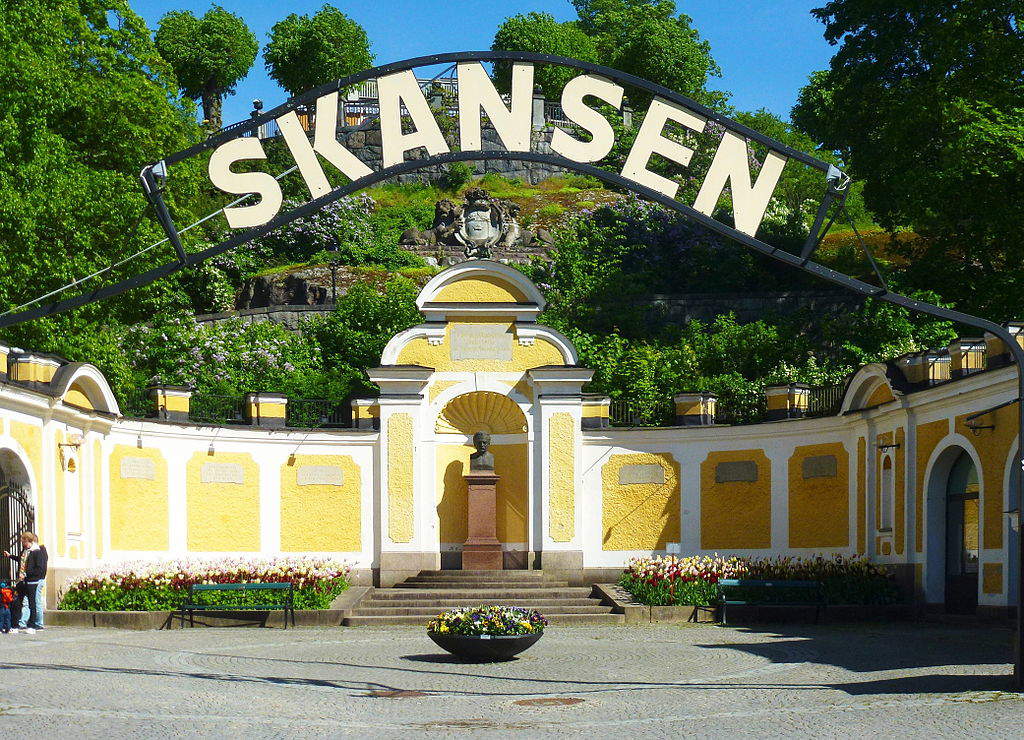 |
| Skansen entrance. Ph. Holger Ellgaard |
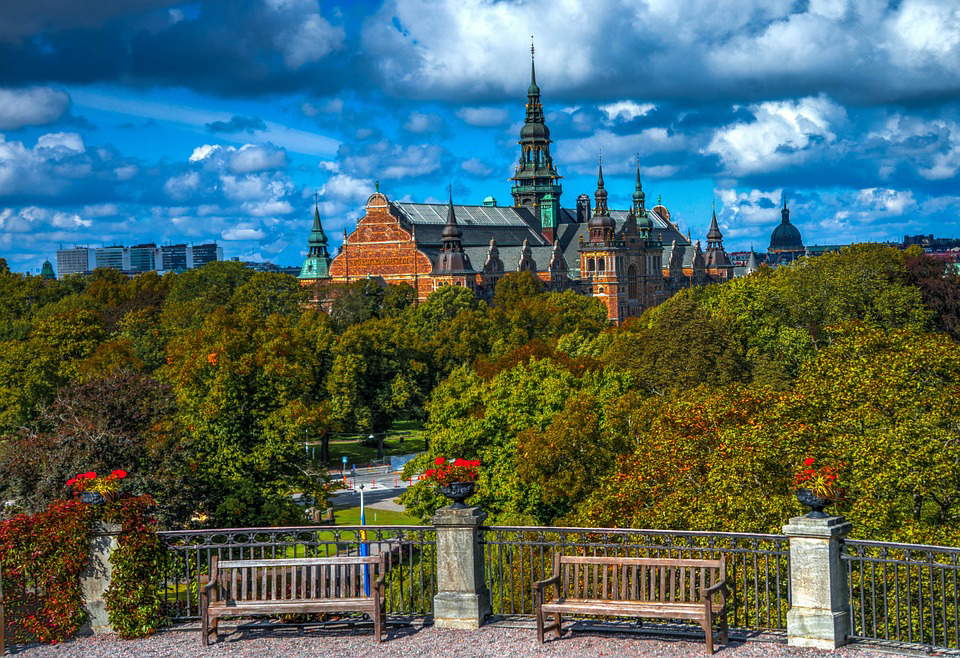 |
| Inside the grounds of the Skansen |
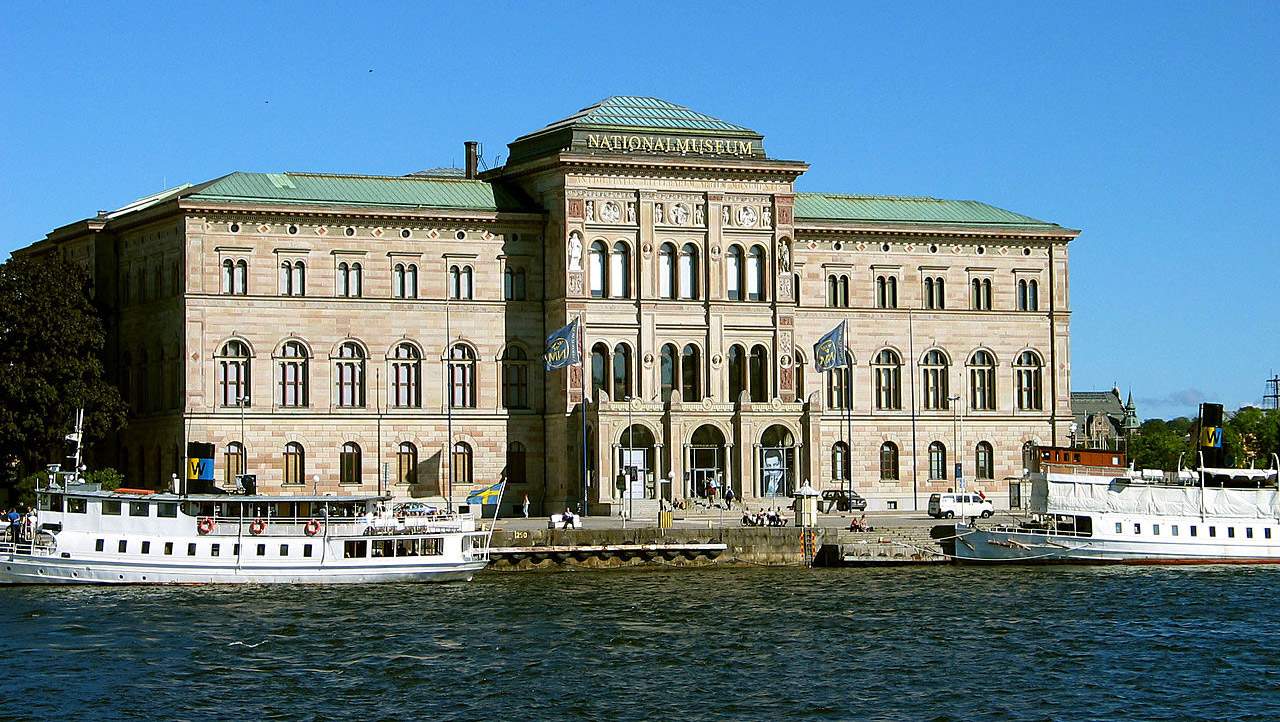 |
| The Nationalmuseum in Stockholm. Ph. Jonas Bergsten |
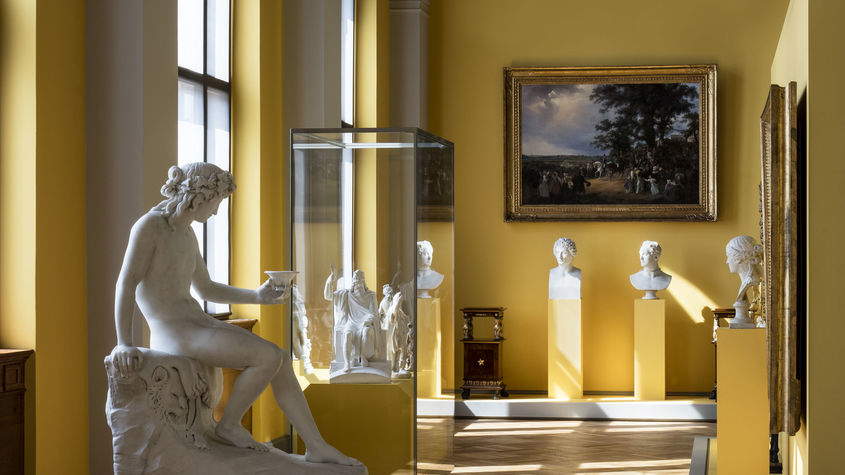 |
| Hall of the Nationalmuseum in Stockholm |
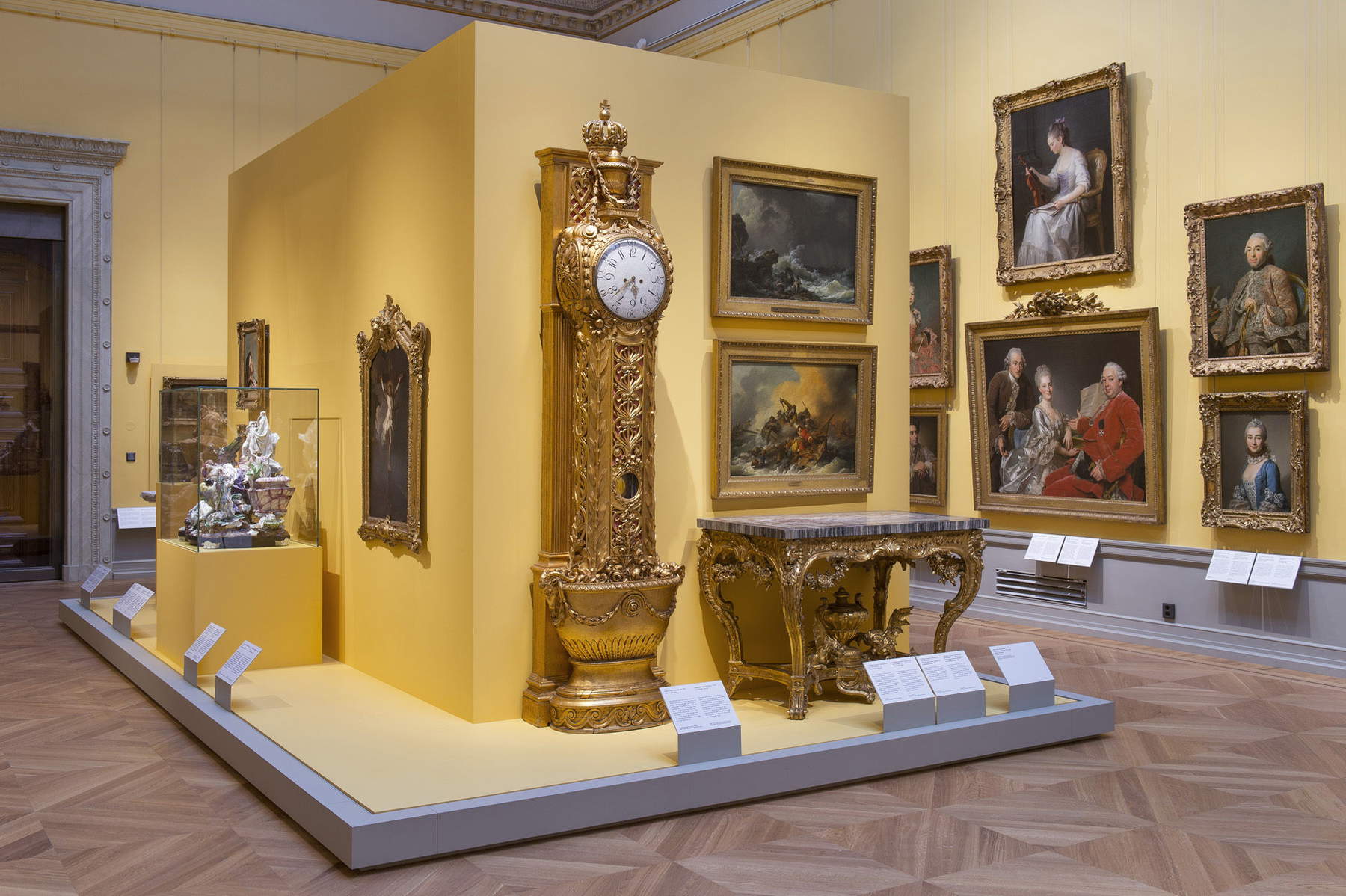 |
| Hall of the Nationalmuseum in Stockholm. |
However, the situation is radically different in the country’s other cities. In Sweden’s second largest city, Gothenburg (population 575,000, compared to Stockholm’s 960,000), the two main art museums, the Konstmuseum and the Konsthall, are open, along with all the other municipal museums. The former is the “home” of Swedish modernism, of the fin de siècle Nordic school (to get up close and personal with the art of Anders Zorn, the Konsthall is a must-see), of the so-called “Gothenburg colorists” (a school that flourished in the 1930s), and of one of the most important Impressionist and Post-Impressionist art collections in northern Europe, with paintings by Monet, Degas, Pissarro, Renoir, Van Gogh, and Cézanne. The Konsthall, on the other hand, is one of the country’s most important hubs for contemporary art. To visit the two museums, the usual recommendations apply: avoid contact, stay home if you feel flu symptoms, wash your hands regularly and very well, sneeze or cough in the elbow crease. There is no requirement for a face mask (indeed, the use of this device in Sweden is not recommended because the Public Health Agency does not consider it “necessary in everyday life,” deeming physical distancing and hand hygiene more important). Again, in keeping with what is happening in the rest of the country, events that could count more than fifty participants have been suspended. To get an explanation of how open museums live in the midst of the epidemic in Sweden, we caught up with Britta Söderqvist, director of the Gothenburg Municipal Museums.
“Here in Sweden,” Söderqvist told us, “many museums have adopted different strategies, based in turn on different elements: the recommendations of the Public Health Agency of Sweden, where the museum is located (and thus the virus situation in the specific context), and how the museum is organized and managed. For example, Sweden’s national museums are autonomous and can decide for themselves whether to close or not. The Konstmuseum in Gothenburg, on the other hand, is an institution run by a local authority and therefore whether it closes is a political decision.” It should be emphasized, however, Söderqvist points out, that the Public Health Agency “has never suggested closing any museum in Sweden.” In Gothenburg, museums have been kept open because, the director further explains, “local policy has never suggested closing any of the city services. Of course we have implemented many health measures, but so have all sectors of society. However, the situation has led to a significant drop in visitors, and as a result our museums have come to social distancing without the need to impose it, since it has been achieved spontaneously, and visitors self-regulate.”
Of course, it is not very surprising that visitor numbers have dropped dramatically: “We had very few visitors this month,” Söderqvist says. "People here stay at home and avoid public spaces because of the restrictions imposed by the government and the Public Health Agency. And even though there has never been a lockdown here like in other countries, most of the population stays at home.“ We then asked Britta Söderqvist what measures, specifically, city museums have taken to combat the coronavirus. ”We ask our public to go to the museum only if you are healthy,“ she explained, ”as well as to stay home if you don’t feel well, to wash their hands, and to keep their distance. These are general measures that the Public Health Agency also recommends. In addition, we do not have any scheduled activities because of the ban on holding events with more than 50 people at a time. In addition, we also adopt the number 50 as a guiding principle to welcome the public at the entrance and for smaller museums. We have also adopted measures for ticketing, which allow people to be able to stand in line safely. Everyone, in any case, we are following the advice of the Public Health Agency. This is what we are doing now. If the Agency gives different recommendations, we follow them. We are well aware that other countries are acting differently, but here in Sweden we have a long tradition of trusting the advice given by specialists, and in this case the specialists are represented by the Public Health Agency."
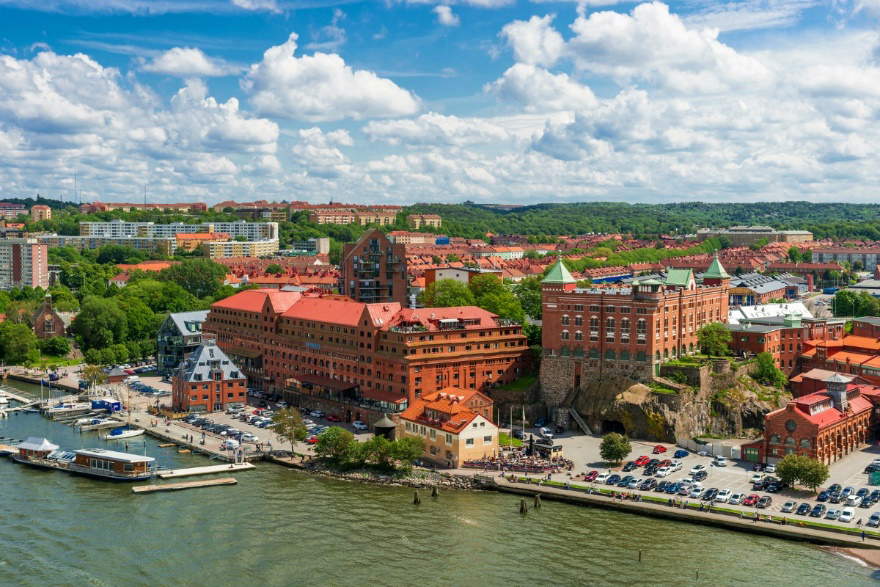 |
| View of Gothenburg |
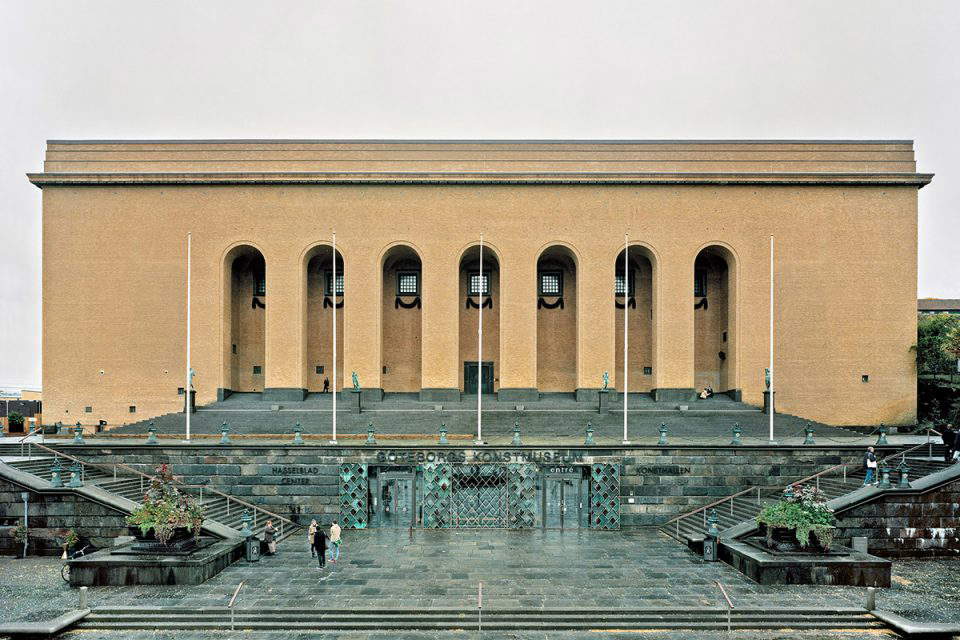 |
| Entrance to the Göteborgs Konstmuseum |
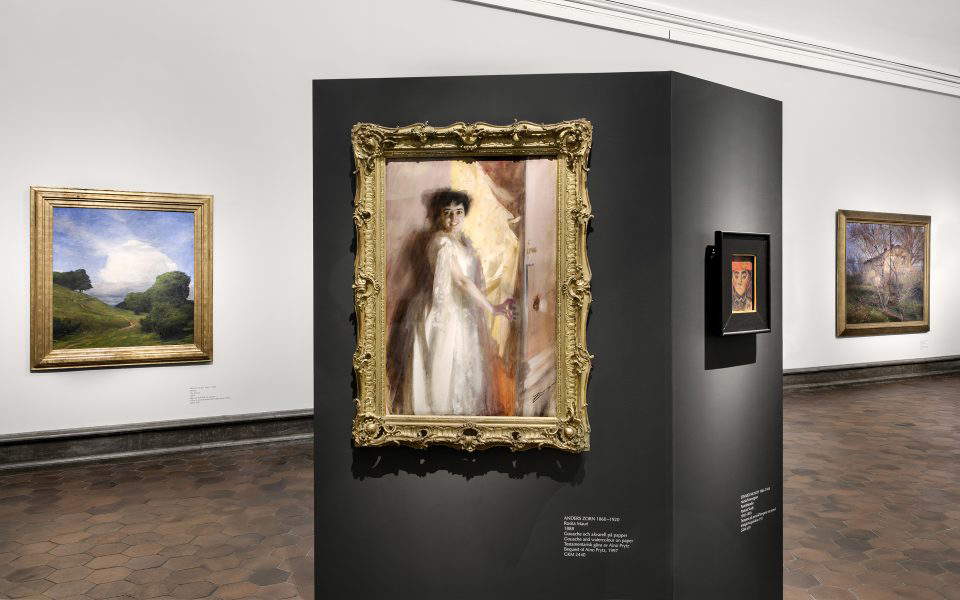 |
| Hall of the Göteborgs Konstmuseum |
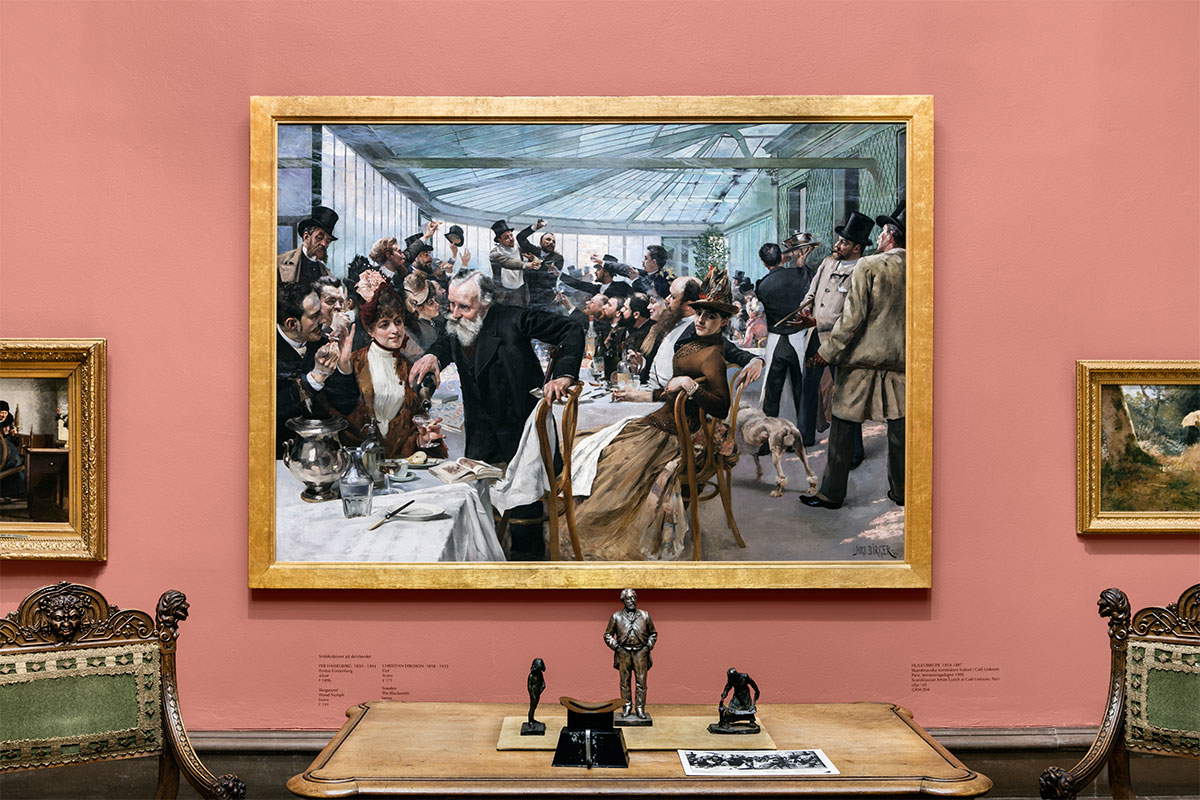 |
| Hall of the Göteborgs Konstmuseum |
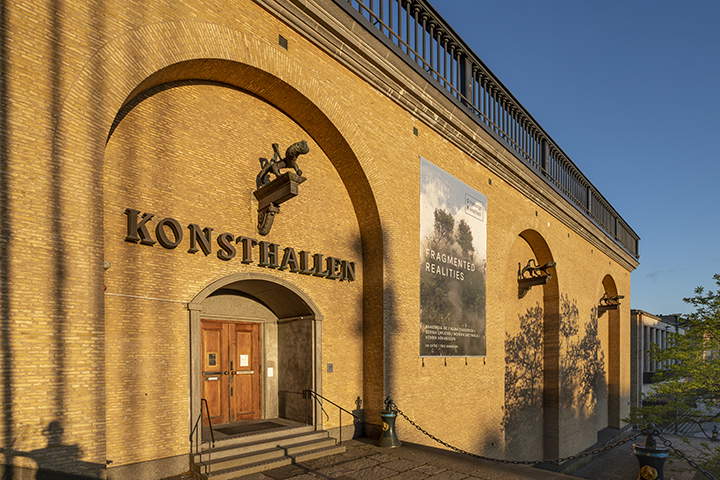 |
| Entrance Hall of the Gothenburg Konsthall |
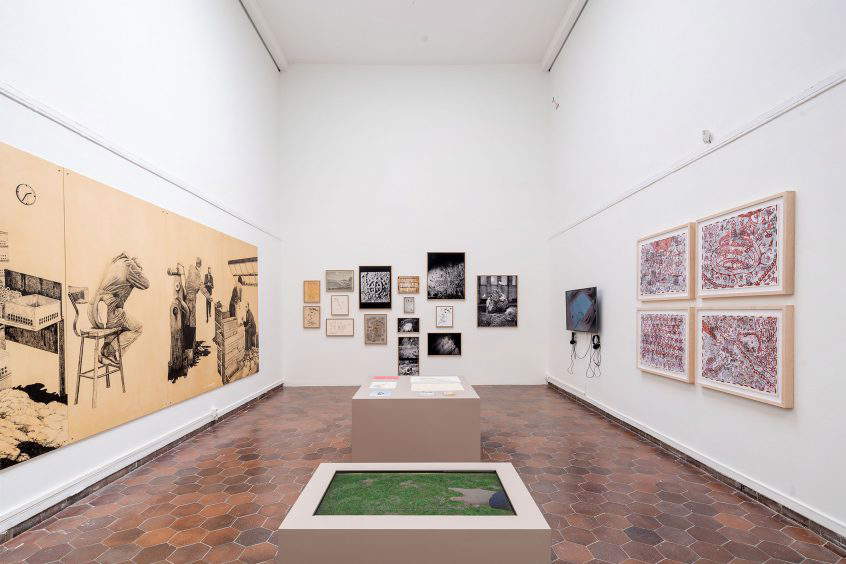 |
| Hall of the Gothenburg Konsthall |
We concluded our virtual trip to the city of Norrköping to see what happens in medium-sized communities instead: Norrköping is in fact a municipality of 87,000 inhabitants, in Östergötland county, and is located less than two hours’ drive from Stockholm, proceeding 160 kilometers southward. The city’s urban area, with just under one hundred thousand inhabitants, is the second largest in the county after the capital Linköping, and the tenth largest in Sweden. It is home to the Norrköpings Konstmuseum, founded in 1913 thanks to a donation, dating back to 1901, from Pehr Swartz, an industrialist from the city (which, by the way, is among the most industrialized in the country, so much so that it has earned the nickname “the Manchester of Sweden”): it is the main local museum, and houses a collection of about 1.500 paintings from the seventeenth century onward, enriched mainly by bequests from the city’s many collectors (it is one of the nation’s leading Swedish art collections), and is best known for its Skuplturparken, a large outdoor sculpture park that is among the largest in Sweden.
As with the museums in Gothenburg and other institutions in the country, the Konstmuseum in Norrköping has kept its permanent collection rooms open and is keeping previously opened exhibitions open to visitors. “Ours is a municipal museum,” Linn Nyström Bennich, the institute’s communications and marketing manager, told us, “and the City of Norrköping has decided not to close any services. We are open but have canceled all events, including guided tours. However, the museum is large and spacious, and our visitors can easily keep a safe distance. We then carefully follow government guidelines, and count visitors so as not to exceed the limits imposed for public events.” The Public Health Agency also "required all public event organizers to compile their own risk profiles, and established a checklist that we follow. We have increased the frequency of our hygiene procedures in both public areas and offices, we have installed disinfectant gel dispensers at the ticket office and in staff quarters, and we strongly urge our visitors to take care of each other, keep their distance, and wash their hands. Again, we ask everyone to stay home as soon as they feel the slightest symptoms of any illness.“ Nyström Bennich also adds that ”most municipal museums in Sweden are still open, and we keep in constant contact with our colleagues."
Even at the Norrköpings Konstmuseum, the decrease in visitor flow has been very significant. “The coronavirus,” says Nyström Bennich, “has had a big impact on the audience numbers. We opened a major monographic exhibition of the artist Cecilia Edefalk, among Sweden’s most important artists, last March 28. There was a virtual opening on Facebook, but no event at the museum, just a quiet opening with 67 visitors coming to the museum during all six hours of opening. Before the Covid-19 outbreak, our estimate was to welcome 25 thousand visitors in April and May. In these two months, at the moment [May 14, ed.], we have registered only 800 visitors: we have noticed that people are very attentive. Most of our regular visitors are people over the age of 70, who are considered an at-risk group, and the government guidelines have been very clear on this: those who are at risk should stay home as much as possible. Then there are restrictions on travel, because Swedes are asked not to make unnecessary trips, and this obviously affects our numbers, because, for example, no tourists are coming in from other cities.”
 |
| View of Norrköping |
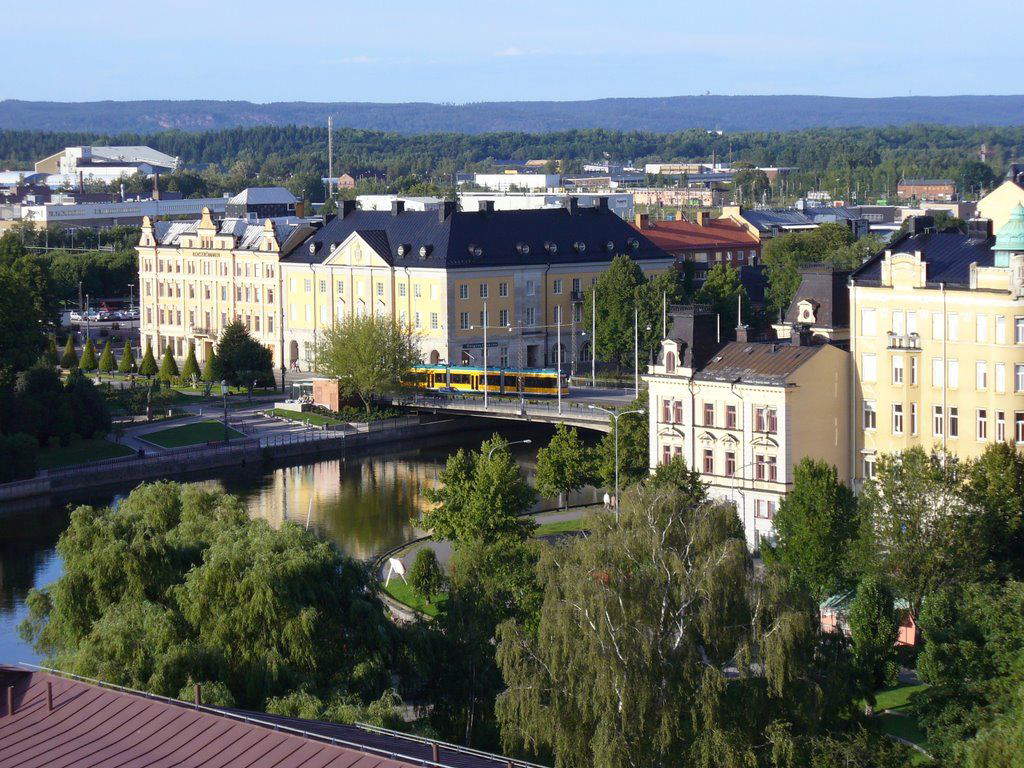 |
| View of Norrköping |
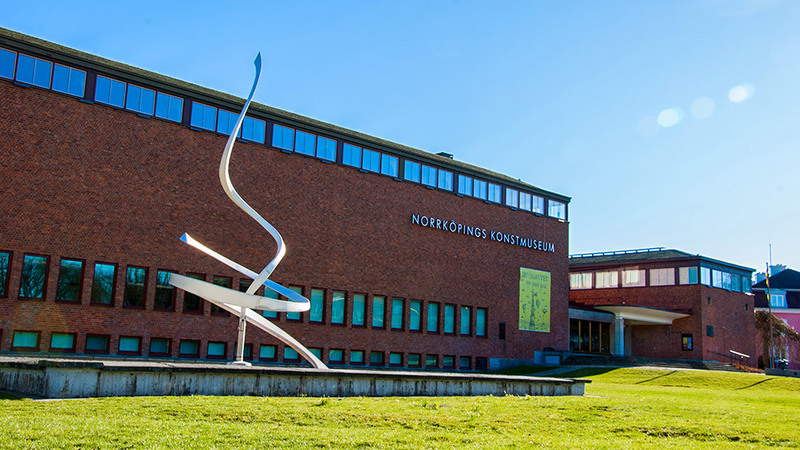 |
| The Norrköpings Konstmuseum |
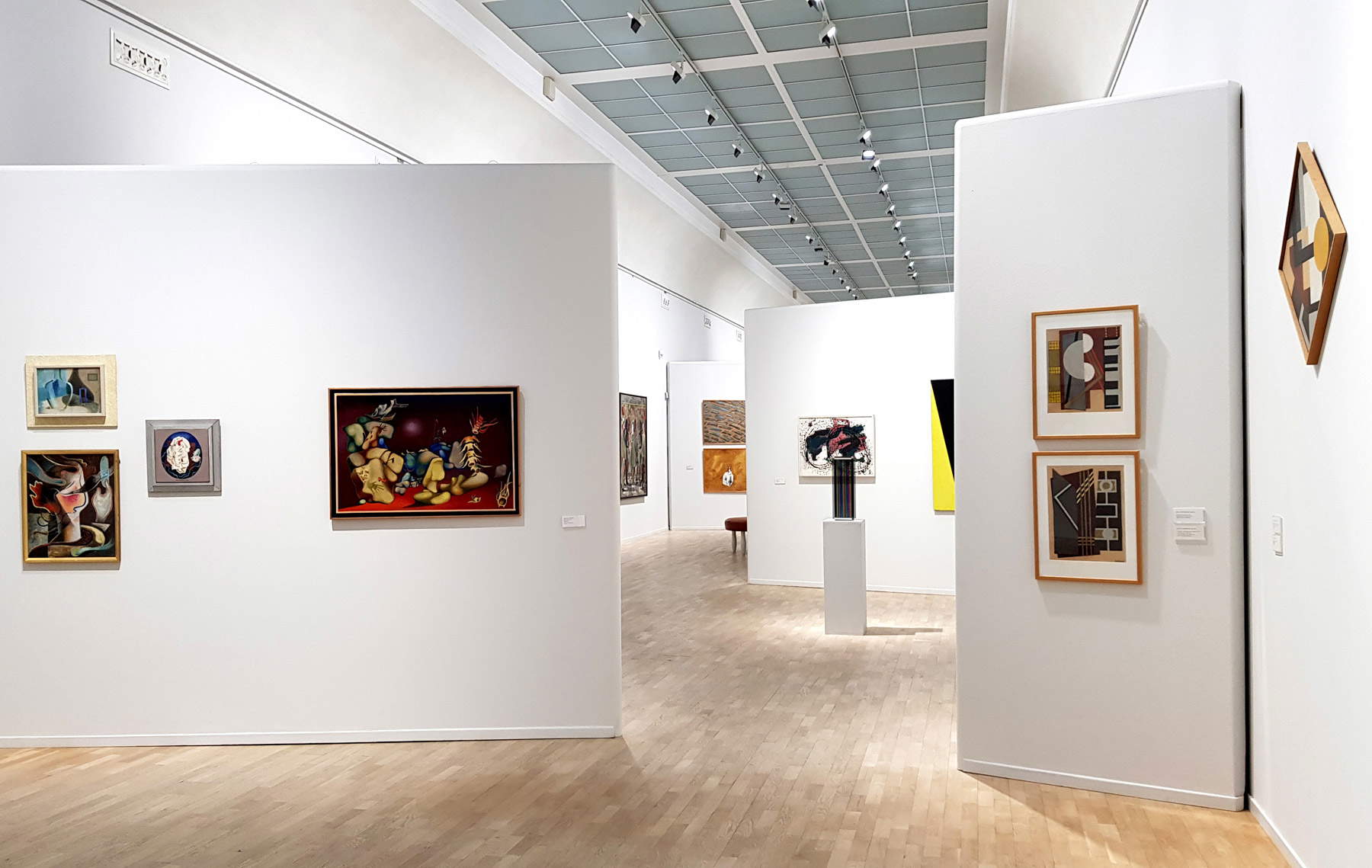 |
| Hall of the Norrköpings Konstmuseum |
The indications coming out of Sweden might therefore be useful in envisioning museums in Italy when they reopen: the management of the epidemic in Sweden, throughout its duration, does not seem so far from what we call “phase 2.” And even if museums do reopen, we should expect a situation not so different from that in Sweden: strict security protocols, visitor spacing, entrance quotas, cancellation of events, openings, and activities involving large groups of people (or, as it is now customary to say, the now infamous “assemblages”). And above all, we will have to expect harsh drops in visitor numbers: partly because there will be a lack of data on tourists, partly because a large part of the population is afraid of becoming infected or infecting someone else, and partly because the public will tend to avoid indoor places (after all, this is understandable, after more than two months of restrictive measures and forced domestic confinement) and, as summer approaches, will most likely prefer to flock to parks, beaches, mountain trails, and the countryside.
It is therefore likely that physical distancing will be spontaneous in Italy as well, just as it was in the Scandinavian country: a condition that, after all, can be easily achieved in the majority of Italian museums, which are already naturally poorly frequented. Could Sweden, then, be a model to look to for the reopening of our museums?
Warning: the translation into English of the original Italian article was created using automatic tools. We undertake to review all articles, but we do not guarantee the total absence of inaccuracies in the translation due to the program. You can find the original by clicking on the ITA button. If you find any mistake,please contact us.




























